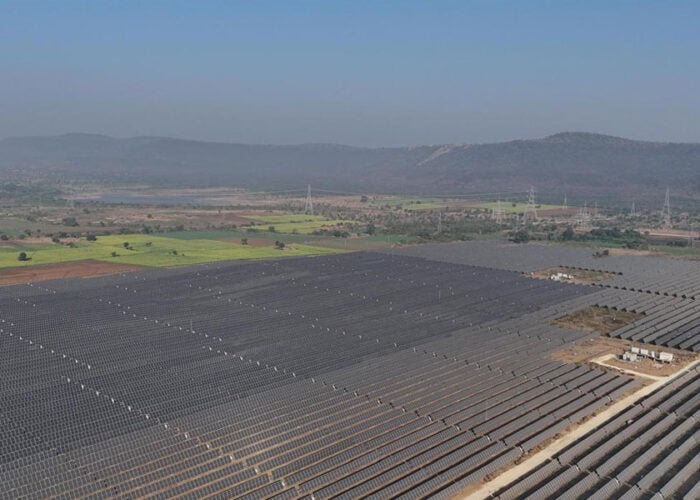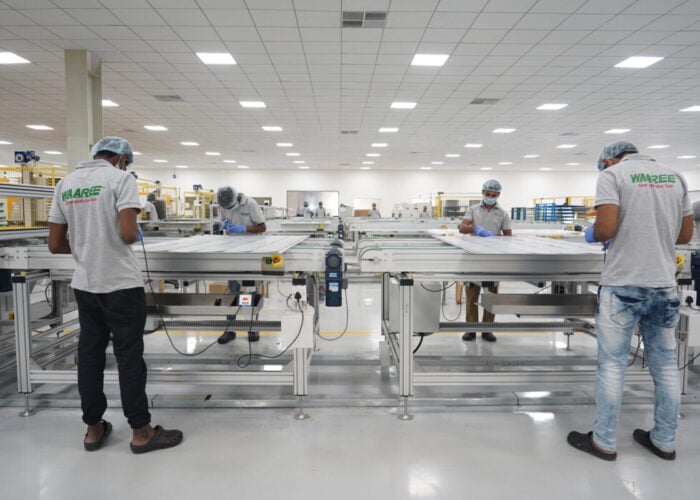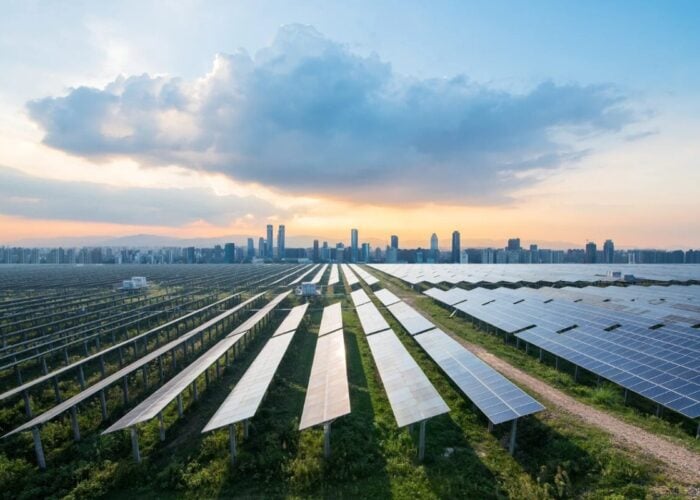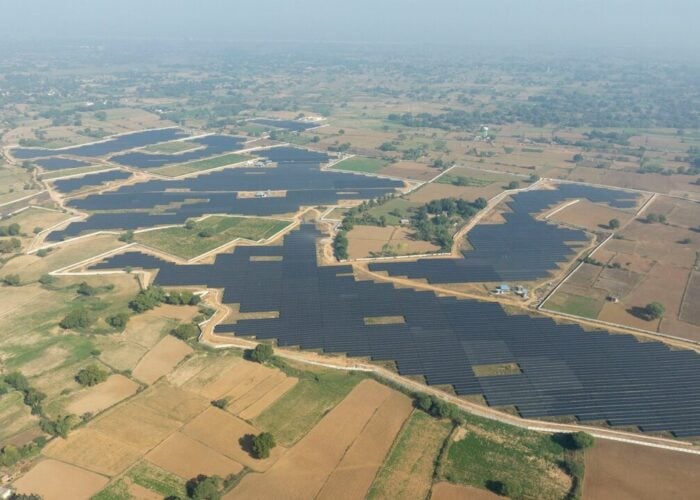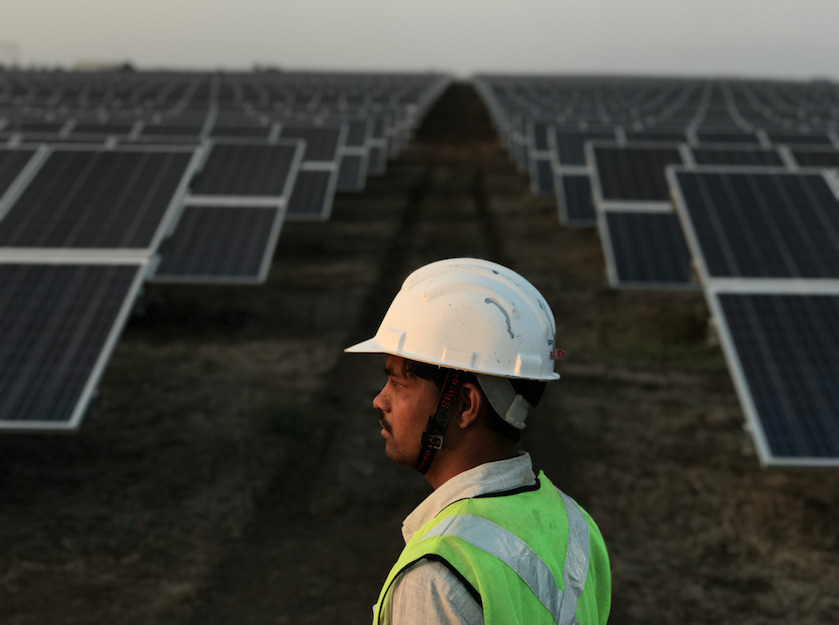
While the big four of customs duty, Goods and Services Tax (GST), anti-dumping and safeguard duties have received heavy media coverage, a fifth element that has a major impact on the Indian solar market is interest rates, particularly as the country has some of the highest costs of capital in the world. This article draws on industry opinion about the future of interest rates and its effect on Indian PV.
After seemingly good news for India’s downstream solar market with the ‘Change-in-Law’ provision clarification – still with some short-term uncertainty – and customs duty being removed from most PV module imports, this week took a turn for the worse. The Madras High Court has reportedly thrown out a writ petition filed by Shapoorji Pallonji against the recommendation of a 70% Safeguard Duty on PV imports, paving the way for a final decision on the duty imposition.
Try Premium for just $1
- Full premium access for the first month at only $1
- Converts to an annual rate after 30 days unless cancelled
- Cancel anytime during the trial period
Premium Benefits
- Expert industry analysis and interviews
- Digital access to PV Tech Power journal
- Exclusive event discounts
Or get the full Premium subscription right away
Or continue reading this article for free
Meanwhile, a Gujarat distribution company (Discom) has also reportedly cancelled its recent 500MW solar auction after discovering far higher prices than it had hoped for – even though they hovered around the once reputable 3 rupee per unit mark (US$0.046). As Mudit Jain, senior manager, consulting at Bridge to India has noted, if a safeguard duty is imposed, just getting INR 3/kWh will also become difficult.
However, behind the scenes, interest rates are also having an impact, to the point where some have even asked for an Indian Green Investment Bank to be formed.
US impact
Sunil Jain, chief executive and executive director of Indian developer Hero Future Energies, says that while module prices have still not softened, interest rates have also started “hardening” and even “going north”. Increased interest rates in the US have a direct bearing in the world market and Jain expects a 25 basis point upward revision of interest rates in India.
“State Bank of India has already done that,” Jain adds. “So all put together in a package for a solar project, the tariffs have to go up. We are very clear on that.”
Rising interest rates would be “sobering” for the Indian market, says Vinay Rustagi, managing director of consultancy firm Bridge to India. Debt utilised for solar projects in India is available on a floating rate basis, which means they are not fixed and can move up and down with interest rates in the vital economy, and some PV developers have taken risks based on a downward path for interest rates.
Rustagi says: “In a way the sector has been very lucky because the last 3-4 years we’ve been on a downward rate trajectory, so that, together with the falling module prices etc., has actually been very favourable for the sector. The tariffs have been going down, and the M&A market has actually been very buoyant because people have been refinancing their projects and then selling them on at a reasonable premium. It is the first time really over the last 3-4 years that we are actually looking at the phenomenon of rising interest rates and I think that is going to be sobering.”
Many players were working on projects under the assumption that interest rates were going to be stable or low, he says, but a rise would mean the industry needs to price it in again, just like the module price, tax and duty risks.
Rustagi adds: “That is definitely going to be a check or balance to the industry in terms of new bidding or even when people are talking about this M&A activity, because that is going to be factored in valuations.”
Effects of an aggressive worldview
Sujoy Ghosh, country head, India, for US-based thin-film PV manufacturer and project developer First Solar, says that when doing the financial modelling for bidding in projects, one has to take a call over 25 years on the cost of capital, which is “cyclical in nature”.
“Currency volatility will remain and so the question is what kind of a view you take long-term,” he adds. “Especially for us as we are not going to hold the asset long-term. It’s very important for us to take a view which we can then sell to an incoming investor two years down the line, and that’s probably one of the reasons where we never assumed that rupee-dollar exchange rate is always going to decline.”
Banks have also started to give longer tenure loans up to 18 years as standard, which makes it even harder to predict. Such predictions, Ghosh says, demonstrate whether a developer has a conservative or aggressive view of the world, and it remains to be seen how those who have taken aggressive views will be affected when rates change direction.
He adds: “If you see the general trend of consolidation happening where you have a lot of these developers who are private equity-backed or platforms which [have] expensive equity capital, who want an out in three years; they are all up for sale now. They are all selling assets. And the question is: will they come back? Probably not, because they built at a point in time when they could take the benefit in declining curve of cost of capital and the declining curve of technology. It’s not going to go down always in that fashion, it’s not linear.”
The early moving companies who had deployed private equity or venture capital funding have now scaled up and accessed a different class of capital, says Ghosh. Companies have listed or drawn in sovereign wealth funds and pension funds. This also means that their risk appetite could go down since such funds are likely to drive more conservative behaviour.
He adds: “One has to wait and watch whether those larger platforms, which now have a different class of investors dictating what they do – how are they going to take a view of these cyclical factors on interest rates and country risks and macro events which could disrupt? As an example, US interest rates going up might see a flight of capital happening from some of these platforms.”
Citing some of the lowest tariffs bid in India so far, Ghosh said the industry will be watching to see if such projects can deliver returns to investors, and if not, there could be more consolidation in the industry.
What’s actually changed?
“A couple of months back we were saying now the interest rates have come so low, they are going down even further,” says Rahul Munjal, chairman and managing director Hero Future Energies. “Then what happened was the data that the government started putting out of either the jobs or Forex or exports was all under stress and, when you're under stress, one realises the future of interest rates is not downwards anymore.”
Suggesting that interest rates will now stay neutral or start to go up like the other commentators, Munjal says the pricing of future bids will be impacted, but it’s all speculative since it is always difficult to predict over 25 years what the average cost will be.
“But one can take a good guestimate with experience and you’ll probably be off by 10% here or there,” he adds. “As long as you’re 10% better off that’s great. If you're more than 10% worse off, then there are issues in the system.”
Pouring cold water
Despite the concerns, Munjal notes the importance of having a historical perspective on the rates. Solar systems developed around 2012 had project financing of 12.5-13.5%, but today the industry is at less than 10%.
“We know it might have gone from a 9.60% to a 9.70% but the reality is you’ve gone down from 12 to 9.70 in the last five years,” he adds.
Nonetheless, he says that just two months ago some players were drawing up business plans expecting rates to reach sub-9% in the next two years, but rates may now have seen their lowest.
“This number plays a very big role, because interest costs are the highest cost that we have,” Munjal adds. “Particularly in India and solar projects, because of the amount of years and the amount of money you borrow.”
Technology first
An in-house legal representative of a heavyweight international developer that is active in India, says: “I don't think the interest rates are the edge factor for a competitive company. It doesn't actually have substantial difference. Even if I go with international funding and foreign funding, still I end up with more or less the same domestic funding because I go ahead with the hedging costs.”
For him the most important factor for competitiveness in the future will be technological improvements and adaptability, as well as increasing the plant load factor (PLF).
“We are completely relying upon the technological improvements,” he says.
Remarking on bidding behaviour, Ashish Khanna, executive director and CEO of vertically integrated manufacturer, EPC and developer, Tata Power Solar, says that too much importance is being given to low tariffs for one-off mega projects, when one is concerned with the full 100GW by 2022 target. He says the industry is going through a natural process of maturing, with bids still based on “assumptions in the Excel spreadsheet” rather than experience, and he expects more consolidation within the industry to occur and “the maturity level of some of the developers will enhance”.
“Some people are trying to match [the] Excel sheet with reality, when they are setting up a project,” he adds. “Reality should be mapped with what my assumptions were in terms of end use. Am I getting the same usage as I assumed? Is my degradation on a y-o-y basis the same as I have assumed? That is where the mapping should happen, but we have not reached that level because we have progressed too fast. So I think when the rubber hits the road, then will this auto-correction, auto-realisation will happen and it is natural.”
A Green Bank for India
C.Narasimhan, president of the Indian Solar Association and chairman of Raasi Group, says that India’s focus on lower tariffs means it is very sensitive to equipment costs. With the threat of cell costs going up, but polysilicon prices simultaneously going down, he hopes that Q2 will also see module prices come down. However low-cost funding is also critical.
He decries Indian firms having to pay such high costs of funding when, across much of the rest of the globe, funds are available at 3-5%. Such is his frustration that he suggests the government should set up an exclusive renewable energy bank through which all funds could flow into the sector at lower rates of perhaps 5-6%. Indian banks should also try to lend to the sector at below 7%, he adds, to try to make such projects stable and viable.
He says: “State Bank of India and others used to lend aggressively in the past, but now mentality is getting changed because of the threats and trouble they are getting from other sectors. Generally some of the banks talk about the energy sector not doing well. I ask them: ‘Which energy are you talking about, are you talking about general energy, dirty energy, conventional energy? We are only talking about renewable energy, clean energy which is a priority sector of the government’.”
India already has separate banks for small industry and agriculture so Narasimhan would like to see the same for clean energy, free from the negative connotations of being part of the overall ‘energy’ landscape in India.
Having been a major factor in drawing the famously low bids at the Rewa Solar Park in Madhya Pradesh – as well as the factors cited above – Interest rates clearly have a significant impact on Indian solar. However, for now all eyes will be on the Ministry of Commerce and its impending safeguard duty decision.


